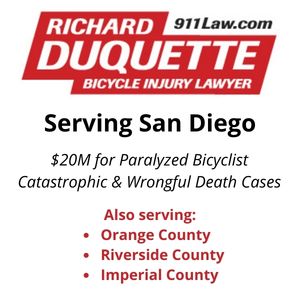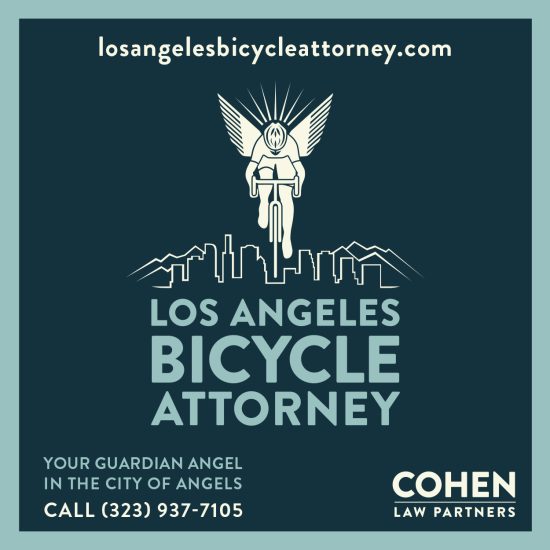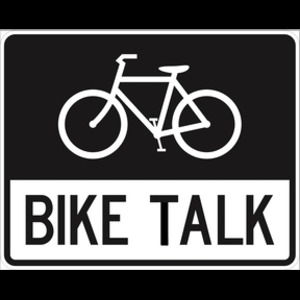
Streets For All is asking everyone to support the Healthy Streets LA ballot proposal now that it’s before the Los Angeles City Council.
The council has 20 days to decide whether to adopt the proposal as written or place it on the ballot for the 2024 election.
Or they could adopt their own ordinance, which could include similar language to the Healthy Streets LA ballot proposal, but could be change at any time, for any reason, unlike the the ballot measure which would require a vote of the people to modify or repeal.
Your support matters, especially since some advocates have come out against it.
WE NEED YOU:
Tell City Council to adopt Healthy Streets LA!
Last month, we turned in more than 100,000 signatures from residents in every single council district in Los Angeles — the people demanded safer streets, protected bike lanes, and dedicated bus lanes. Yesterday, the City Clerk certified our petition.
Now, it goes to City Council. The City Council has 20 days to decide to adopt our measure as an ordinance, or send it to the ballot to let the voters decide. We already know what voters want. That’s why we need your help to get the city council to adopt us as an ordinance within the next two weeks.
………
Good news for carfree households.
One of the most exciting bills in CA: SB 457. The bill would give households tax credits for *not* having cars. A two-adult household with no cars would get a $5,000 tax credit. If they had one car, they’d get $2,500. Two cars, $0.https://t.co/nyPp1np8nL https://t.co/e75RUiHXCp
— Yonah Freemark (@yfreemark) August 12, 2022
Let’s hope this one passes.
It could do as much as anything to help get people out of their cars.
………
This is who we share the road with.
A New Hampshire truck driver plowed head-on into a group of motorcyclists, killing seven people; a jury let him walk without a day behind bars, though he may be deported to his native Ukraine. Just in case you wondered why people keep dying on our streets. And my apologies to whoever sent this to me; I’m afraid I lost track of it over the weekend.
A Pennsylvania man faces charges after plowing through a crowd gathered to raise funds for victims of a deadly house fire, killing one person and injuring 17, including four critically; he then ran down his own mother with his car and beat her to death with a hammer.
A driver plowed into an Arlington, Virginia pub, injuring 15 people, two critically; people inside described the crash as being like a bomb going off.
………
Too many Angelenos learn about our deadly streets the hard way.
#WATCH: "It opened my eyes about the streets of LA," says the sister of a hit-and-run victim from the corner where her brother was killed. Family of Jammie Wilson want a stronger commitment to #VisionZero. pic.twitter.com/6G4ZxUV9U1
— Jeff Vaughn (@JeffVaughn) August 13, 2022
………
Evidently, Portland drivers can figure out what San Diego drivers couldn’t.
Or didn’t want to.
………
Not Just Bikes considers the bakfiets as a car. replacement.
………
French illustrator Jean-Jacques Sempé created over one hundred covers for The New Yorker, including many bicycling themed illustrations.
Jean-Jacques Sempé, France’s most celebrated cartoonist, has died aged 89. He did many New Yorker covers, including this one from 1983. pic.twitter.com/01LGG6VsSb
— Carlton Reid (@carltonreid) August 11, 2022
………
If anyone has me on their Secret Santa list, I’ll gladly settle for a copy of this painting.
Or the original, even.
Morning Lights by John Lines (b.1938) pic.twitter.com/kONGVmEIwh
— Grim Art (@GrimArtGroup) August 13, 2022
………
The war on cars may be a myth, but the war on bikes just keeps on going.
This is what a punishment pass looks like.
No bias here. A Louisville KY TV station reports, apparently seriously, that a salmon cyclist crashed her bike into the front of a police patrol car, rather than the cops hitting her with their car. That’s like saying “Please accept my apologies for hitting your fist with my nose.”
Sometimes, it’s the people on two wheels behaving badly.
Police in Fort Worth, Texas are looking for a bike-riding man who rode out of the darkness to slash a man’s arm with a machete.
………
Local
Los Angeles Times readers address the recent article about the Healthy Streets LA initiative qualifying for the ballot with surprisingly less vitriol than expected, though one insisted on trotting out the old “this is not Amsterdam” bromide, combined with the myth that its too hot to ride to work in a suit here. Especially since so many Angelenos have ditched their suits post pandemic.
The Times editorial department says you’ll soon have the chance to vote for safer streets.
Treehugger says the high-speed Windsor Hills crash that killed six victims, including a pregnant mother just two weeks from full term, has reignited debate about installing speed limiters in cars.
State
California governor Gaven Newsom has named former Los Angeles Mayor Antonio Villaraigosa to serve as the state’s first Infrastructure Advisor to identify priority projects and maximize access to federal dollars.
A memorial crowdfunding campaign has raised over $110,000 for the family of Christine Hawk Embree, the 35-year old Carlsbad mother killed by a driver while riding an ebike with her 16-month old daughter; at last check, the fund stood at more than $119,000.
Eight San Diego men set a new team record for riding across the US in five days, two hours and 47 minutes.
Police in Contra Costa County arrested a hit-and-run driver who allegedly killed a 57-year old bike rider, before crashing head-on into another car minutes later.
A new 600-mile hiking and mountain biking trail could help revive dying towns in the Sierras.
National
Bike shops couldn’t keep up during the pandemic bike boom, and ended up ordering bikes that weren’t delivered until the after the boom crested; now they’re overflowing with bikes they can’t sell. For some reason, this story wasn’t blocked by the Wall Street Journal’s paywall, though your results may vary.
Tech Radar offers a ten point checklist on how to safely secure your bike. And adds advice to never buy cheap secondhand bikes from shady sellers.
A Flagstaff, Arizona woman rode her mountain bike 2,700 miles on off-road trails in 51 days — despite being blind.
There is no lower form of human scum than someone who could leave a bike-riding 6-year old Las Vegas boy to die in the street.
That’s more like it. A Beaumont, Texas driver got 12 and a half years behind bars for the hit-and-run death of a bike rider; his sentence was extended as a repeat offender.
A Wisconsin family brings 17 extra bikes with them to ensure every child can take part in the Green Bay Packer’s tradition of riding borrowed kids bikes to practice.
Christian singer Amy Grant has postponed more concert dates in September and October, as she continues to recover at her Nashville home from being knocked cold falling off her bike.
No, New York City will not be banning cars anytime in the foreseeable future.
The gunman who killed a security guard on the set of Law & Order: Organized Crime in Brooklyn last month apparently stalked the victim using a bicycle.
Someone tossed a heavy bikeshare bike onto the tracks in front of a New York subway train, with predictable results.
This is the cost of traffic violence. Friends remember a Virginia woman who was killed by a teenaged drunk driver while riding with a friend at 7:30 am; the other woman remains hospitalized in critical condition.
President Biden took another bike ride with his family while on vacation in South Carolina. And didn’t fall off this time.
A Miami man carries his 75-pound, sunglass-wearing golden doodle on his back as he rides around his neighborhood.
Kindhearted Florida duputies bought a 13-year old boy “the monster of all bikes” after learning he was depressed over the theft of his bike and the death of his father.
International
Road.cc reviews the new book Two Wheels Good – The History and Mystery of the Bicycle, giving it four out of five stars. The website also lists a half-dozen bike upgrades you don’t really need, from high-end gruppos to disc brakes and tubeless tires.
Kindhearted Ottawa, Canada cops dug into their own pockets to buy a new bike for a young kid after the one he received in a charity giveaway was stolen.
Someone may have stolen $3,300 from a bike rider in Trinidad after he was killed in a collision.
A British luxury lifestyle magazine recommends the best places for a biking vacation this fall. And no, nowhere in the US made the cut.
They get it. Officials in Camden, England say new bike lanes will benefit both bike riders and local businesses.
A 34-year old Edinburgh man with terminal motor neurone disease completed a mountainous, 20 hour, 265-mile fundraising ride; in the four years since his diagnosis, he’s raised the equivalent of $181,000 to fight the disease, with another $60,000 pledged for this ride.
Life is cheap in the UK, where a truck driver got just seven months behind bars for killing a 71-year old man riding a bicycle; he played the universal Get Out Of Jail Free card, saying he just didn’t see the victim.
Would you like fries with that? A new documentary tells the story of a Yugoslavian man who ate an entire bicycle in three days. No, really.
Over 100 bicyclists turned out to mark Azadi Ka Amrit Mahotsav, aka the 75th anniversary of Indian independence.
Nice story from Gabon, where a teacher got tired of watching her students walk for miles to get to school, so she started a company making bamboo bicycles; she already has over 5,000 orders.
You’ve got to be kidding. The new Hermes bicycle sold out in mainland China, despite a price tag over $24,000. Demonstrating that a number of wealthy Chinese have more yuan than sense.
Competitive Cycling
Seventy-one-year old Rick Taggart qualified for the US Nationals for his age bracket, despite a high-speed crash in the final mile of a 76-mile race that left him with a broken collarbone; he somehow managed to finish the race anyway.
Pez Cycling News takes a look at seven of the world’s “most challenging, weirdest bike races.”
Finally…
That feeling when your bike breaks during a 1,000-mile audax, so you ride into the nearest town, buy a new frame and build up a new one to finish the ride. We may have to deal with LA drivers, but at least we don’t have to worry about getting kicked in the head by a deer doing a high jump.
And evidently, Napoleon was one of us, too.
Not sure if this is legit – his polo mallet is missing.#BOTD pic.twitter.com/tOFoIUqryl
— Cool Bike Art (@CoolBikeArt1) August 15, 2022
………
Be safe, and stay healthy. And get vaccinated, already.
Oh, and fuck Putin, too.








